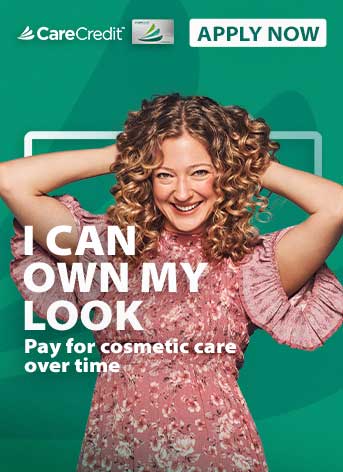The skin may be one of the strongest organs in the body, but age, sun damage and other conditions can leave visible effects that consumers may want to remove — from acne scars to pigmentation issues.
Ablative and non-ablative treatments are two common laser skin resurfacing treatments to help remove these and other conditions from the skin. Continue reading to learn more about each treatment and which may be best for you.
How Does Laser Skin Resurfacing Work?
Laser skin resurfacing uses lasers to direct concentrated beams of light at targeted areas of the skin. Laser skin treatments help minimize signs of aging and improve the skin's appearance by reducing wrinkles, blemishes, scars, sun damage, hyperpigmentation and other skin problems.
Ablative vs. Non-Ablative Treatments
Ablative and non-ablative laser resurfacing treatments are both designed to address common skin concerns, ranging from sun damage to acne to fine wrinkles.
Ablative laser resurfacing
Ablative treatments are considered invasive and come with a longer recovery time, along with longer lasting results. They use one of several types of lasers to remove the top layers of the skin and heat the deeper layer, a procedure known as skin resurfacing, according to the National Institute of Health's National Center for Biotechnology Information.
Lasers emit light energy that gets absorbed by components of the skin, which kills the surrounding tissue and enables it to be removed from the face.1 The process also has a stimulating effect on the skin's production of new collagen, thus smoothing the appearance of wrinkles and producing tighter skin.2
Non-ablative laser resurfacing
Non-ablative treatments can still have a positive effect on skin concerns, though recovery is shorter and effects may take longer to reveal themselves. Non-ablative laser treatments send heat into the skin to promote collagen production and skin tightening. Because it is less invasive, healing is quicker; however, the patient will require more sessions of this type of treatment to achieve desired results.3
Be sure to seek professional guidance and consultation with a dermatologist or plastic surgeon to personalize these treatments and get the best possible outcomes.
Treatment Applications and Targeted Concerns
Ablative treatments can treat a number of skin conditions and concerns (though you'll need to consult with your dermatologist or plastic surgeon to determine if your condition is eligible).
Ablative treatments can address:4
- Wrinkles and fine lines
- Sun damage
- Uneven skin texture
- Uneven pigmentation (skin coloring)
- Scars (such as from acne or chicken pox)
- Birthmarks
- Nonresponsive skin after a facelift
- Enlarged oil glands on your nose
Non-ablative treatments can address:1
- Mild to moderate wrinkles
- Pigmentation issues
- Rosacea
- Vascular lesions (broken blood vessels, veins)
Types of Ablative Laser Treatments
Ablative treatments, which remove skin layers through lasers, typically use one of two types of lasers:
- Carbon dioxide (CO2) laser
- Erbium laser
Lasers are a tool of choice among dermatologists because they have a high level of precision and control with minimally invasive results.5 Non-fractionated or "full field" lasers target an entire area of skin, such as the full face; fractionated lasers apply to smaller sections of skin within a target area, which reduces the intensity of side effects and improves recovery time.1
CO2 laser treatment
The carbon dioxide (CO2) laser has been around for a long time to treat noncancerous skin conditions. It uses an invisible infrared beam, its wavelength absorbed by water in the skin, which makes ablation techniques quite simple and easy to control.1 This form of laser is especially good at reducing smaller, finer wrinkles, like crow's feet at the eyes or smile lines at the mouth.1
Erbium laser treatment
Erbium lasers, on the other hand, are typically used only to remove superficial wrinkles on the face, as well as the chest, neck and hands. This type of laser also heats up water in the skin, but its energy absorption factor is as much as 12 to 18 times more intense than the CO2 laser — thus, the effects last longer than with a CO2 laser. People often opt for erbium laser resurfacing because it produces less bruising, redness or swelling than a CO2 laser. It's also recommended for people with darker complexions.1
Within the two categories of lasers, there are also subtypes used in skin resurfacing, including:
- Fraxel. Fraxel is a form of CO2 fractional laser, in which the laser targets a specific location on the skin, rather than the whole area. This type of treatment is often recommended for patients with acne scarring because it stimulates the regrowth of new skin through the healing process.6
- IPL. Intense pulsed light (IPL) lasers use a more diffuse light that straddles the visible and invisible wavelengths of light. This treatment has been around for a long time, which makes the cost of treatment lower as well. IPL is commonly used to treat broken blood vessels, pigmentation, photodamage, acne and unwanted hair.7
- Nd:YAG. The Q-switched Nd:YAG laser is a treatment especially suited for highly pigmented skin or to remove unwanted tattoos (most effective on darker inks).8 The laser can switch between two energy frequencies: one that targets deep skin layers (for tattoo removal) and one that remains more superficial to deal with issues like hyperpigmentation.
Types of Non-Ablative Laser Treatments
For patients who aren't comfortable with the more invasive level of laser resurfacing, non-ablative lasers can still treat skin conditions such as wrinkles, pigmentation and small scars.
Photo rejuvenation
Photo rejuvenation uses IPL laser treatments to lighten and remove brown age spots or sun spots, improve skin texture and reduce redness from skin conditions like rosacea and broken blood vessels. Most people benefit from three to five treatments, spaced about a month apart, with improved results appearing after each laser treatment. Results should last about a year.9
Fraxel Restore
Fraxel Restore treats fine lines like crow's feet, brow lines and minor surface scars from acne. Most patients undergo two to three treatments within a six-month period for best results. This type of laser treatment may have a longer downtime compared to other non-ablative laser treatments.10
Pulsed Dye Laser (PDL)
PDL is a type of vascular laser that uses yellow light to destroy broken blood vessels on the face without damaging the surrounding skin. PDL is ideal for treating red-colored malformations, hemangiomas, red moles, capillaries and other vascular lesions.11 The cosmetic procedure often takes only a few minutes, has no downtime and results should be visible immediately.
Laser Skin Resurfacing Cost: Ablative vs. Non-Ablative
The average cost of ablative laser skin resurfacing is $2,509. The average cost of non-ablative laser skin resurfacing is $1,445.12 However, these numbers can vary widely based on a variety of factors, including the specific type of laser, locations of the treatment and more.13
Ablative laser resurfacing costs
| Laser Type | Price Range |
|---|---|
|
CO2 Laser |
$2,446 to $6,70014 |
|
Fraxel |
$100 to $3,90015 |
|
IPL |
$506 to $1,70016 |
|
Nd:YAG |
$149 to $1,25017 |
Non-ablative laser resurfacing costs
| Laser Type | Price Range |
|---|---|
|
Erbium (Er:YAG) Lasers |
$2,000 to $2,50018 |
|
Pulsed Dye Lasers |
$400 to $80019 |
|
Fraxel |
$100 to $3,90015 |
|
IPL |
$506 to $1,70016 |
Ablative Treatment Procedure Overview
You will most likely get your ablative laser resurfacing treatment in a dermatologic surgeon's office or clinic. The surgeon will clean the skin surface, then you'll be given a local anesthetic to control pain. If you're anxious about surgery, you may also receive a sedative.4
The surgeon will apply protective eye shields so that your eyes are not harmed during treatment. You may feel the doctor holding your skin taut as the laser is applied.4 The whole treatment can take between 30 minutes and two hours, depending on the type of laser, the condition that is being treated and the treatment area size.4
Recovery and downtime
After your treatment, the surgeon will apply a nonstick dressing to the treatment areas that you will leave on for approximately 24 hours.4 You will need to clean the treated areas between two and five times daily with either a saline solution or a diluted vinegar solution to prevent infection and reduce swelling, and apply an ointment or moisturizing cream to limit scab formation.
In the days after, your skin may ooze fluid, feel raw and remain inflamed for several weeks, including burning, itching or tingling sensations. It's important not to pick at your skin. You can take over-the-counter pain medicine and use ice packs to calm the pain.2
You'll want to refrain from any intense activity for about a week, as well as complete any antiviral or antibiotic medications your doctor gives you to limit infection. It is common to have multiple follow-up appointments as you recover.2
Healing can take between five and 21 days, and the redness should fade in two to three months.4 You should begin to see results as soon as the skin finishes healing from the treatment itself, which can be as early as two to three weeks, and results can last from one to three years.20
Risks and side effects
With ablative treatments, some common side effects include:4
- Milia. These are small, white bumps that can be removed by cleansing gently with a washcloth.
- Hyperpigmentation (darker pigmentation), and more rarely, hypopigmentation (lightening of the skin). You can treat the former with bleaching cream. Using broad-spectrum sunscreen before and after the treatment helps prevent these problems.
- Reactivation of a herpes simplex cold sore. This is more likely to occur if you have laser skin resurfacing around your mouth. If you are prone to this, ask your surgeon for an antiviral medication.
- Infection. Your doctor may prescribe an antibiotic.
- Swelling. If the swelling is around your eyes, your doctor may prescribe steroids.
- Scarring. Though rare, it can occur.
Non-Ablative Treatment Procedure Overview
Because of the milder nature of non-ablative lasers, the procedure and recovery are both simpler than ablative procedures. With non-ablative treatment, you'll receive a topical anesthetic, sometimes an additional sedative if needed, and in some practices, ice rollers to minimize discomfort.21 For some patients, the laser itself feels like light rubber band snaps which can cause mild discomfort in more sensitive areas.
Recovery and downtime
Recovery time is minimal for non-ablative laser treatments, and many patients can get back to work right after the procedure. The skin should continue to improve for up to six months. Dermatologists recommend three treatments, spaced about a month apart.21
Any redness can be easily masked with makeup. However, it is recommended to:3
- Keep the treatment area moisturized.
- Avoid sleeping on the treated area.
- Use a cold compress to reduce pain.
- Avoid sun exposure and use a broad-spectrum sunscreen of at least SPF 30 every day.
For both ablative and non-ablative treatments, it is recommended you:3
- Stop tanning and avoid excessive sun exposure several weeks prior to treatment.
- Stop wearing perfume, deodorants and other potential irritants near the treatment area.
- Stop taking aspirin or other blood thinners before treatment.
Results and effectiveness
While laser treatments can make incredible changes in some patients' skin, it won't restore skin to perfection.22 Ideal candidates for laser treatments have skin that is already in a good state of elasticity, with a non-oily complexion, few to moderate blemishes and a complexion that is light to medium.
Risks and side effects
With non-ablative treatments, common side effects include:23
- Redness, swelling, itching and pain
- Acne or milia
- Infection
- Changes in skin color
- Scarring
Does Insurance Cover Ablative and Non-Ablative Skin Resurfacing?
Neither ablative nor non-ablative laser skin resurfacing are typically covered by health insurance.24 There are a few exceptions, such as when a precancerous or cancerous skin condition has been surgically addressed, in which case insurance might cover a portion. However, most patients must pay out of pocket or finance these procedures on their own.
CareCredit Credit Card Financing for Ablative and Non-Ablative Skin Resurfacing
Ready to revitalize your appearance and boost your confidence? The CareCredit credit card makes it easy to pay for ablative or non-ablative skin resurfacing and related expenses not covered by health insurance.* Apply today and use our Acceptance Locator to find a doctor or cosmetic surgeon near you that accepts CareCredit so you can stop dreaming and start living your best life. Continue your wellness journey by downloading the CareCredit Mobile App to manage your CareCredit account, find a provider on the go, and easily access the Well U hub for more great articles, podcasts, and videos.
Author Bio
Jordan Rosenfeld has been freelance writing for 21 years about finances, health, education and more. Her work has appeared in The Atlantic, The Billfold, Good Magazine, GoBanking Rates, Daily Worth, Quartz, Medical Economics, The New York Times, Paypal, The Washington Post and more.








